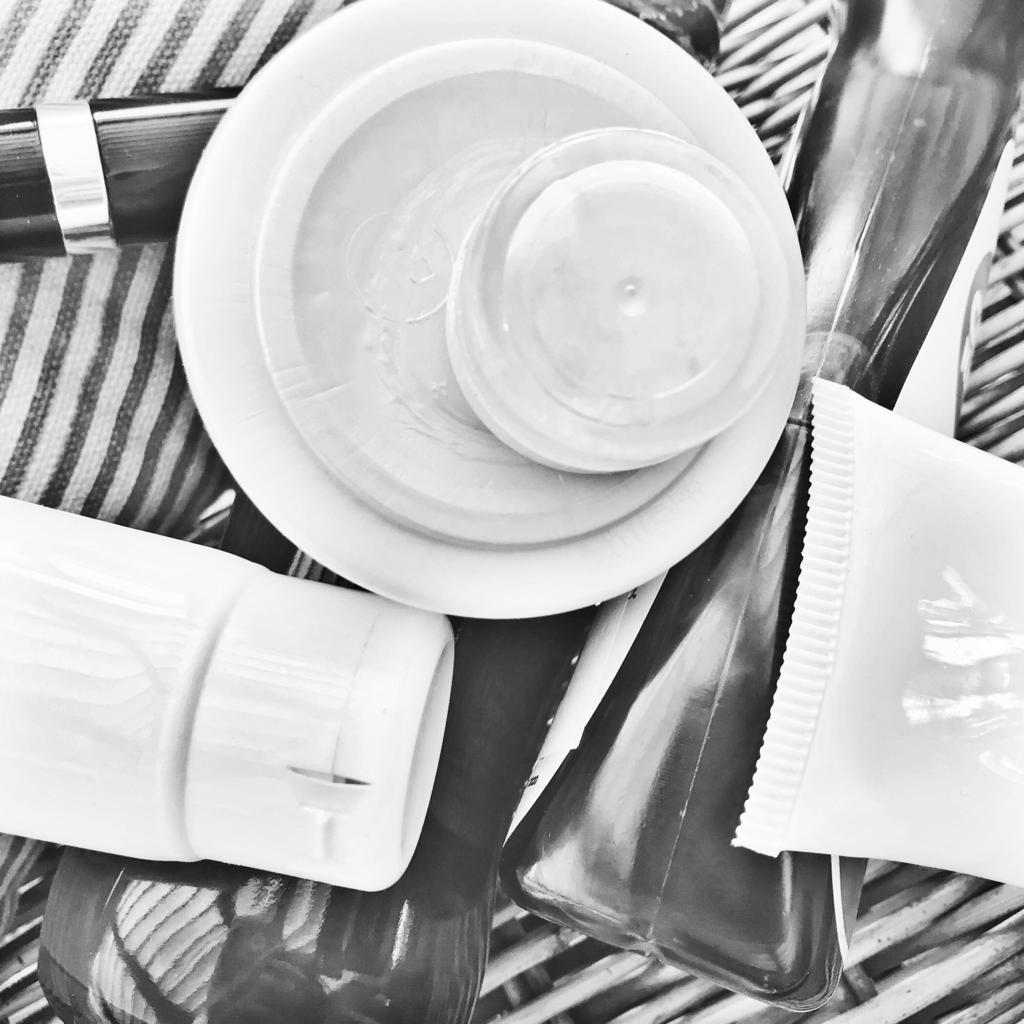Allergen
Paraben Mix
Paraben Mix is on published lists of common contact allergens, and includes Benzyl-, Butyl-, Ethyl-, Methyl-, and Propyl Paraben. As far as hypoallergenicity is concerned, if you have sensitive skin (and certainly if you have patch tested positive for them), it’s best to steer clear of parabens.
Other health scares are less straightforward. A 2004 study caused some fear because it showed the presence of parabens in breast cancer tumors. However, as the American Cancer Society points out, the study was small (20 breast tumor samples) and inconclusive:
- The study did not show that parabens caused or even contributed to breast cancer, only that they were in the breast cancer samples;
- Estrogens that the body makes naturally are thousands of times greater than what is found in the weak estrogen-like properties of parabens so that “natural estrogens (or those taken as hormone replacement) are much more likely to play a role in breast cancer development”; and
- Parabens are everywhere. The researchers did not specify where the parabens in the breast cancer samples came from (cosmetics, food, etc.).
A 2016 systematic review (where researchers examine existing studies on a topic to compare data and look for patterns, for example) found only two case control studies related to parabens and breast cancer from 2002 and 2006. The review concluded: “Our comprehensive search has identified an insufficient number of studies to conduct a quantitative review and obtain reliable results.”
This does seem to imply that there is not enough evidence yet to make any conclusions about the possible health risks — beyond being proven contact allergens — of parabens. But parabens are everywhere and we do not yet know what the accumulated exposure may do to our bodies, if anything. Further studies are therefore needed.
In the meantime, we do know that they are proven contact allergens and are probably wise to avoid if you have a sensitive skin condition.
If you have a history of sensitive skin, don’t guess: random trial and error can cause more damage. Ask your dermatologist about a patch test.
To shop our selection of hypoallergenic products, visit vmvhypoallergenics.com. Need help? Ask us in the comments section below, or for more privacy (such as when asking us to customize recommendations for you based on your patch test results) contact us by email, or drop us a private message on Facebook.
For more:
On the prevalence of skin allergies, see Skin Allergies Are More Common Than Ever and One In Four Is Allergic to Common Skin Care And Cosmetic Ingredients.
To learn more about the VH-Rating System and hypoallergenicity, click here.
Main References:
Regularly published reports on the most common allergens by the North American Contact Dermatitis Group and European Surveillance System on Contact Allergies (based on over 28,000 patch test results, combined), plus other studies. Remember, we are all individuals — just because an ingredient is not on the most common allergen lists does not mean you cannot be sensitive to it, or that it will not become an allergen. These references, being based on so many patch test results, are a good basis but it is always best to get a patch test yourself.
1. Warshaw, E.M., Maibach, H.I., Taylor, J.S., et al. North American contact dermatitis group patch test results: 2011-2012. Dermatitis. 2015; 26: 49-59
2. W Uter et al. The European Baseline Series in 10 European Countries, 2005/2006–Results of the European Surveillance System on Contact Allergies (ESSCA). Contact Dermatitis 61 (1), 31-38.7 2009
3. Wetter, DA et al. Results of patch testing to personal care product allergens in a standard series and a supplemental cosmetic series: An analysis of 945 patients from the Mayo Clinic Contact Dermatitis Group, 2000-2007. J Am Acad Dermatol. 2010 Nov;63(5):789-98.
4. Verallo-Rowell VM. The validated hypoallergenic cosmetics rating system: its 30-year evolution and effect on the prevalence of cosmetic reactions. Dermatitis 2011 Apr; 22(2):80-97
5. Ruby Pawankar et al. World Health Organization. White Book on Allergy 2011-2012 Executive Summary.
6. Misery L et al. Sensitive skin in the American population: prevalence, clinical data, and role of the dermatologist. Int J Dermatol. 2011 Aug;50(8):961-7.
7. Warshaw EM1, Maibach HI, Taylor JS, Sasseville D, DeKoven JG, Zirwas MJ, Fransway AF, Mathias CG, Zug KA, DeLeo VA, Fowler JF Jr, Marks JG, Pratt MD, Storrs FJ, Belsito DV. North American contact dermatitis group patch test results: 2011-2012.Dermatitis. 2015 Jan-Feb;26(1):49-59.
8. Warshaw, E et al. Allergic patch test reactions associated with cosmetics: Retrospective analysis of cross-sectional data from the North American Contact Dermatitis Group, 2001-2004. J AmAcadDermatol 2009;60:23-38.
9. Foliaki S et al. Antibiotic use in infancy and symptoms of asthma, rhinoconjunctivitis, and eczema in children 6 and 7 years old: International Study of Asthma and Allergies in Childhood Phase III. J Allergy Clin Immunol. 2009 Nov;124(5):982-9.
10. Kei EF et al. Role of the gut microbiota in defining human health. Expert Rev Anti Infect Ther. 2010 Apr; 8(4): 435–454.
11. Thavagnanam S et al. A meta-analysis of the association between Caesarean section and childhood asthma. Clin Exp Allergy. 2008;38(4):629–633.
12. Marks JG, Belsito DV, DeLeo VA, et al. North American Contact Dermatitis Group patch-test results, 1998 to 2000. Am J Contact Dermat. 2003;14(2):59-62.
13. Warshaw EM, Belsito DV, Taylor JS, et al. North American Contact Dermatitis Group patch test results: 2009 to 2010. Dermatitis. 2013;24(2):50-99.
15. Darbre PD1, Aljarrah A, Miller WR, Coldham NG, Sauer MJ, Pope GS. Concentrations of parabens in human breast tumours. J Appl Toxicol. 2004 Jan-Feb;24(1):5-13.
16. Allam FM, Breast Cancer and Deodorants/Antiperspirants: a Systematic Review. Cent Eur J Public Health 2016, 24(3):245-247.
Want more great information on contact dermatitis? Check out the American Contact Dermatitis Society, Dermnet New Zealand, and your country’s contact dermatitis association.







